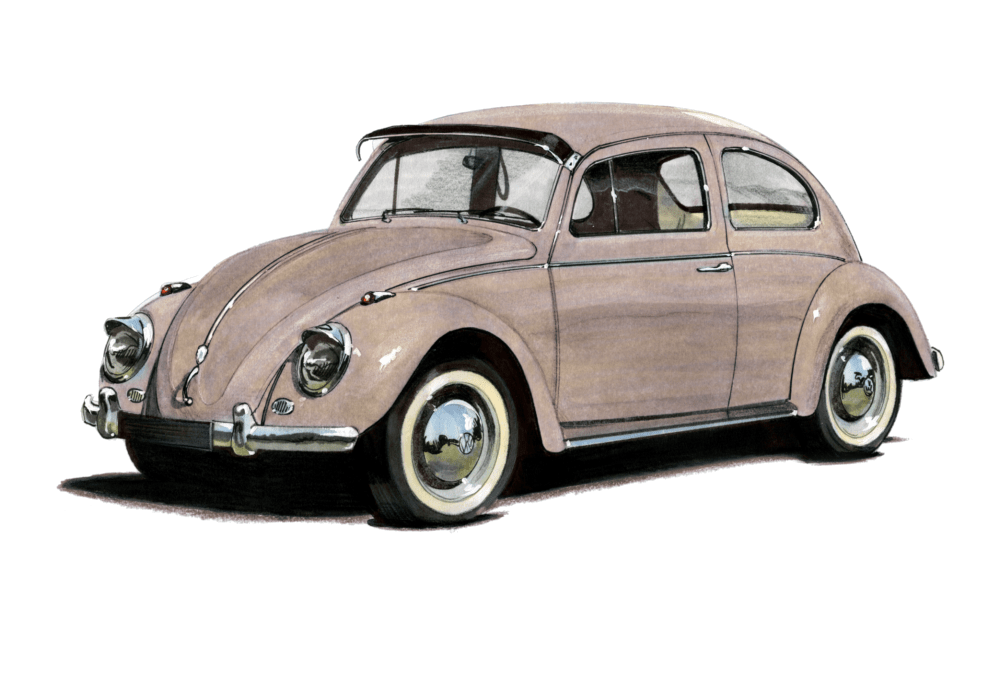
One of the most iconic car models in history, the Volkswagen Beetle, thrived for seven decades on the global automobile market. Known as “the people’s car,” the Beetle was conceived in the 1930s in Nazi Germany with the intention of making a cheap, simple car to be mass-produced. Now an international symbol of offbeat charm and cool, the Volkswagen Beetle has undergone significant design and technical transformations over the years.
The Classic Years (1938-2003)
The Beetle came to life under the blueprint of Ferdinand Porsche, but mass production did not start until 1945 due to World War II. The vehicle earned the name “Beetle” because of its rounded, compact design resembling a bug. The ‘People’s Car’ or ‘Volkswagen’ featured an air-cooled rear engine, a simple yet sturdy structure, and remarkable fuel efficiency. Its design steadily evolved over the decades with alterations in the shape, size, and angle of its features like the rear window, windscreen, and front indicators, among others.
Marketed as an affordable, efficient family car, the Beetle swiftly propagated globally and became the world’s best-selling car with over 21.5 million units produced. Incredibly user-friendly, the Beetle was popular because it was easy to drive and even easier to repair, a testament to Volkswagen’s engineering genius and user-centered design.
The New Beetle (1997-2011)
In a wave of nostalgic design, Volkswagen launched the New Beetle in 1997. With an objective to anchor itself in the emerging global market, Volkswagen took a trip down memory lane and revived the beloved Beetle with an innovative design intended to evoke emotion among potential customers.
The New Beetle maintained the iconic curvy silhouette, albeit slightly larger, but had a modern front-mounted, water-cooled engine, in stark contrast to the original. The interior embraced retro design with color-matched panels but integrated modern conveniences such as dual front airbags, anti-locking brakes, and air conditioning.
The 21st Century Beetle (2011-2019)
Volkswagen took a bold step in design and technology with the announcement of the third-generation Beetle in 2011. The 21st-century Beetle adopted a more aggressive, sporty stance with a more elongated, flattened roofline. The rounded headlights were replaced with sleek bi-xenon headlights and LED daytime running lights, giving the Beetle a contemporary feel.
Technologically, the third-gen Beetle was outfitted with various high-tech features such as a cutting-edge infotainment system, smart key access with push-button start, an advanced safety system, and fuel-efficient turbocharged engines. This was a radical departure from the simplicity of the initial Beetles, reflecting the changing consumer demands of the 21st century.
Despite these modern enhancements, the 21st-century Beetle paid homage to its roots through retro-inspired details like body-colored dash panels, a unique glovebox design, and an available Fender premium audio system, reminiscent of the brand’s history with rock ‘n’ roll culture in the 1960s.
End of an Era
Despite its heartfelt evolution, Volkswagen announced the ending of Beetle production in July 2019. But the design and technological progress the Beetle embodied throughout seven decades will resonate within Volkswagen’s ethos and the global automotive industry. The legacy left by the Beetle serves as a critical leaping point for Volkswagen’s further advancement into the electric car revolution.
The evolution of the Volkswagen Beetle, from its humble origins to its contemporary silhouette, is a testimony to the intersection of design, technology, and societal changes. The Beetle will forever remain an iconic testament to how a car can inspire, adapt and evolve, blending functionality, and emotion seamlessly.